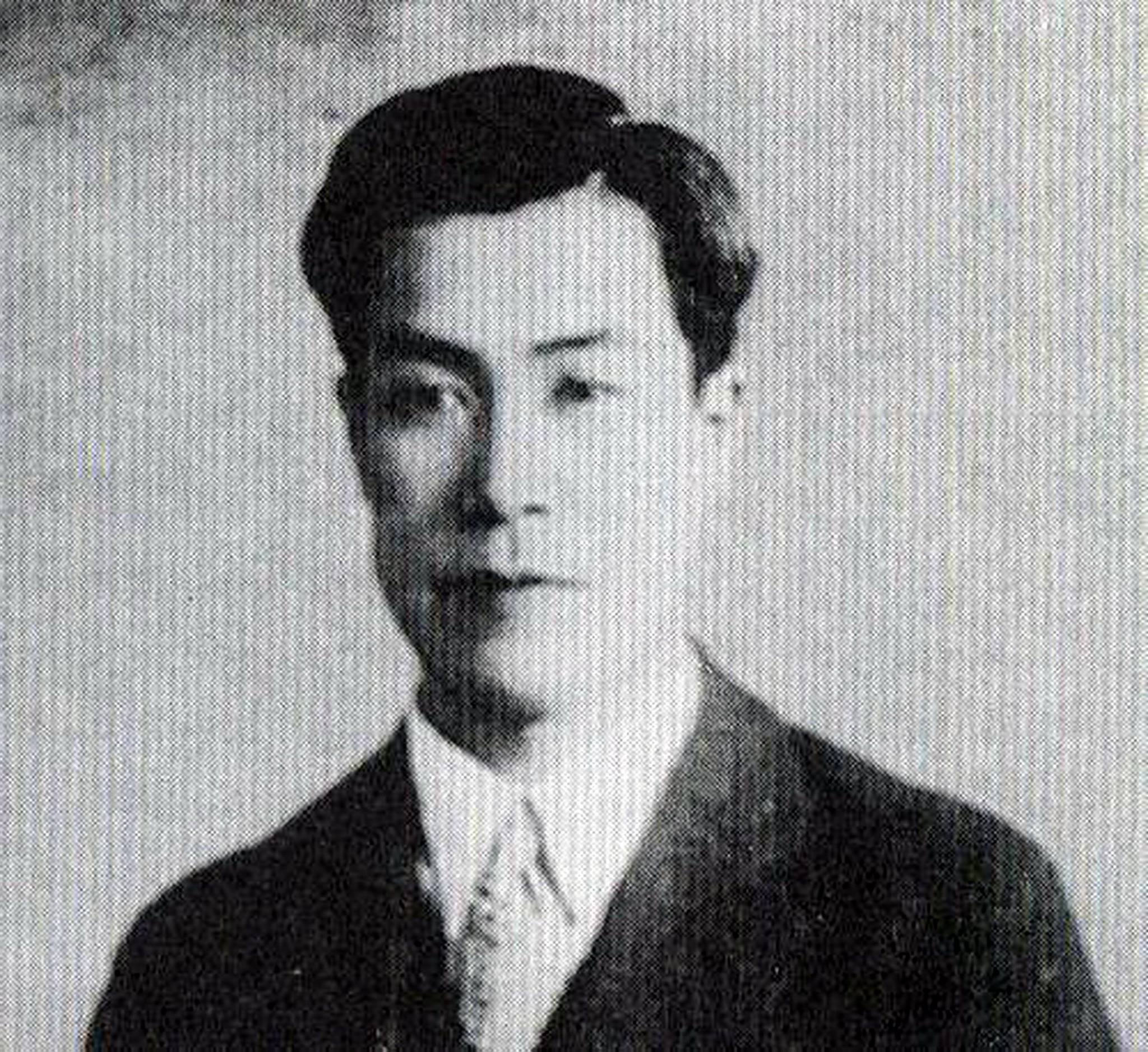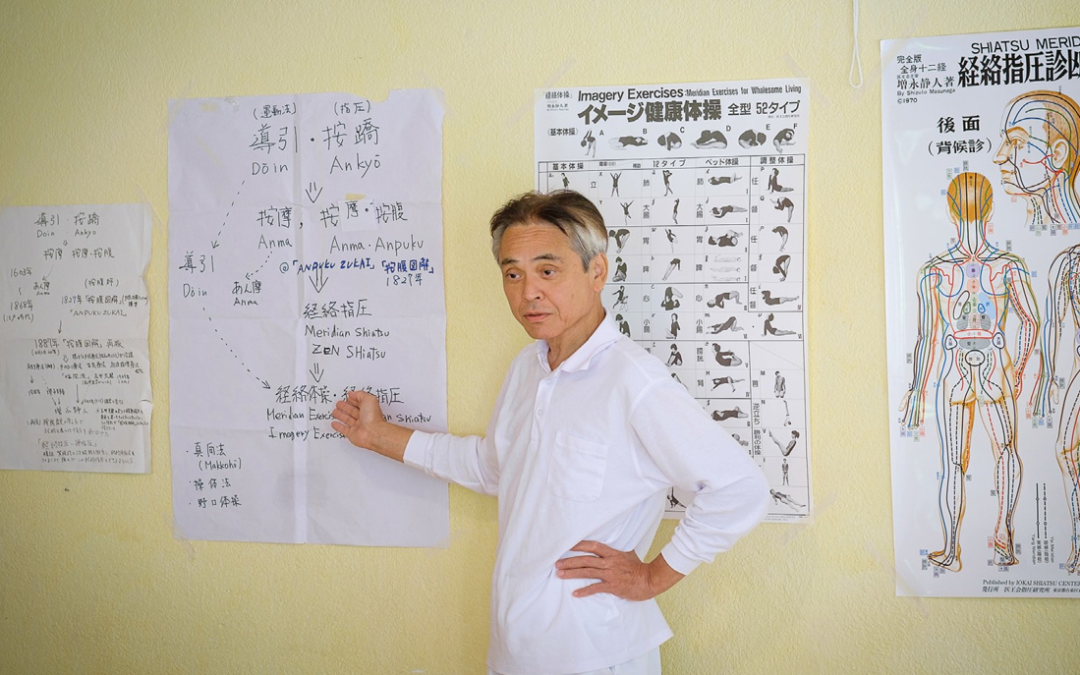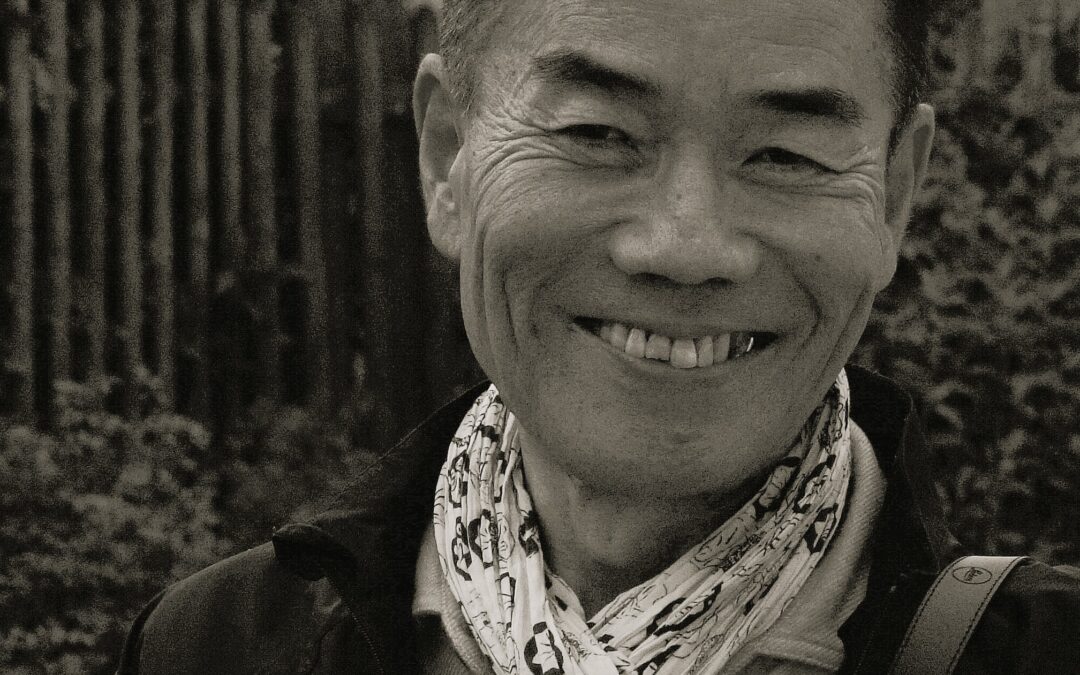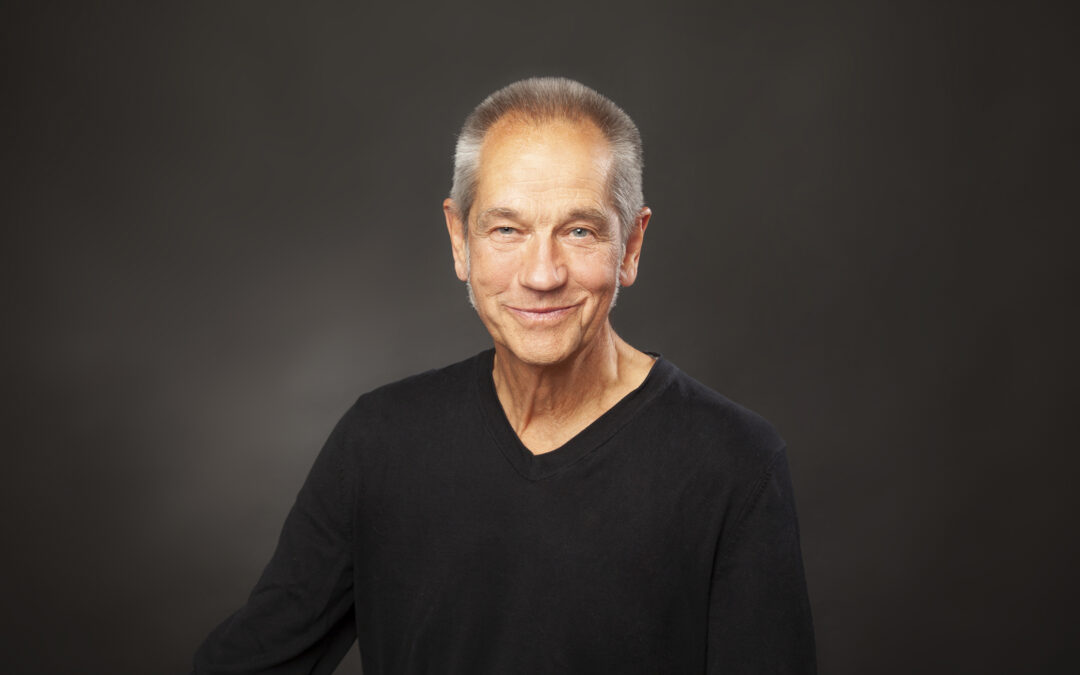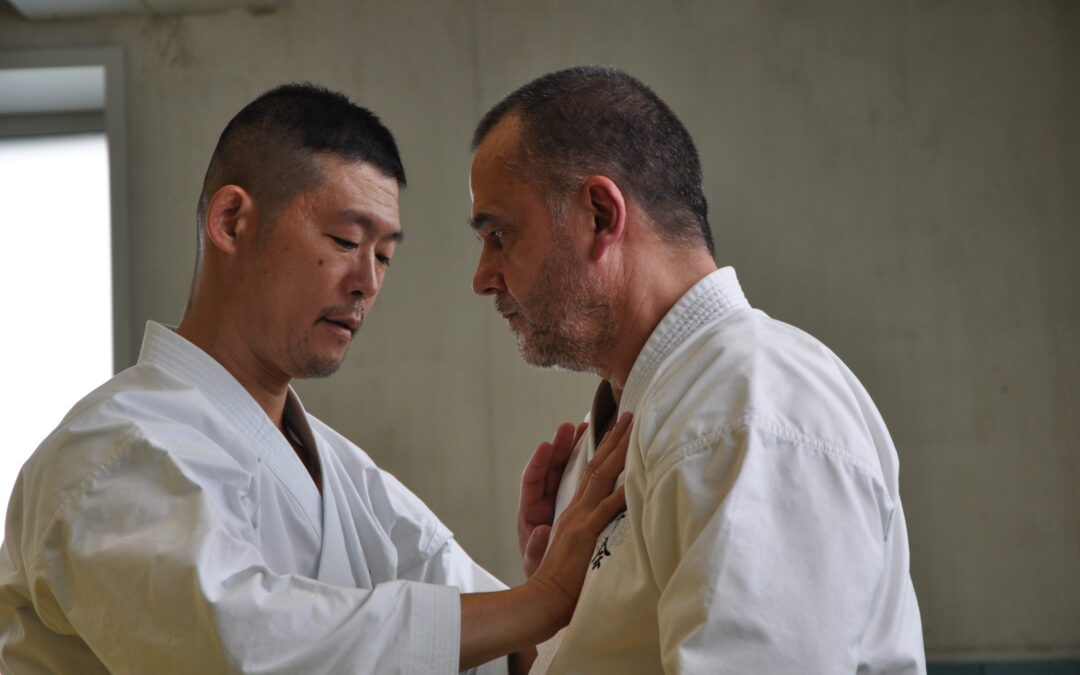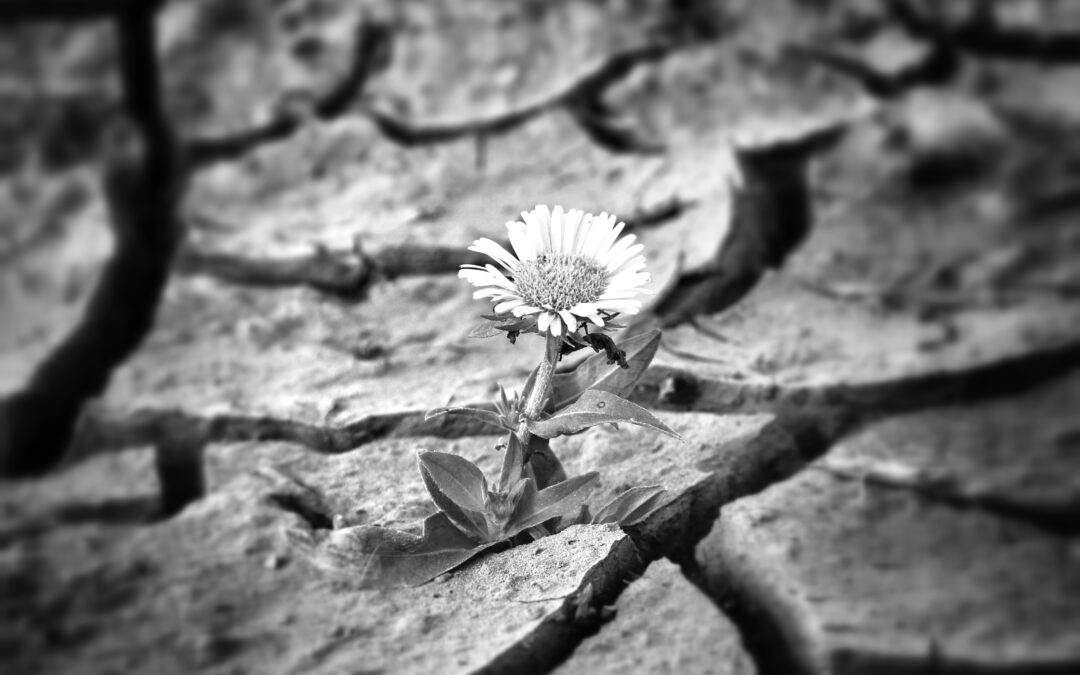With the collaboration of Billy Ristuccia
Dr. Haruchiki Hirata is not well known among Shiatsu practitioners, except by a handful who are interested in the history of Shiatsu. He was not one of the pioneers of Shiatsu, but rather one of the great influencers of these pioneers. Dr. Hirata was very well known during his lifetime, but he was also a jack-of-all-trades, a brilliant and rebellious spirit who was always looking for ways to heal people. His methods, the numerous techniques and theories he developed (notably the 12 Hirata zones) as well as his impressive literary work, will be one of the keys to the construction of both the martial and official branches of Japanese Shiatsu. A must-see!
Haruchiki Hirata was born on April 26, 1901, in the town of Ako, located in the southwestern part of Hyōgo Prefecture, bordering the Seto Inland Sea. It was in this town that in 1701 the famous 47 rōnins carried out a revenge. His first name is a tribute to Oishi “Kuranosuke” Yoshio, who was the leader of the servants of the murdered lord and who took the lead of these rōnins. He is the eldest son of Kanji Hirata. In this family there are many medicine merchants. The Hirata family were medicine dealers who left Tatsuno during the time of the Mori family of the Ako clan during the Edo period. In addition to the family business, his father Kanji loved poetry, tea ceremony and calligraphy, and was also president of the Bank of Ako, which opened in 1888. It was thus in a relatively well-established and prosperous family that the young Haruchiki grew up.
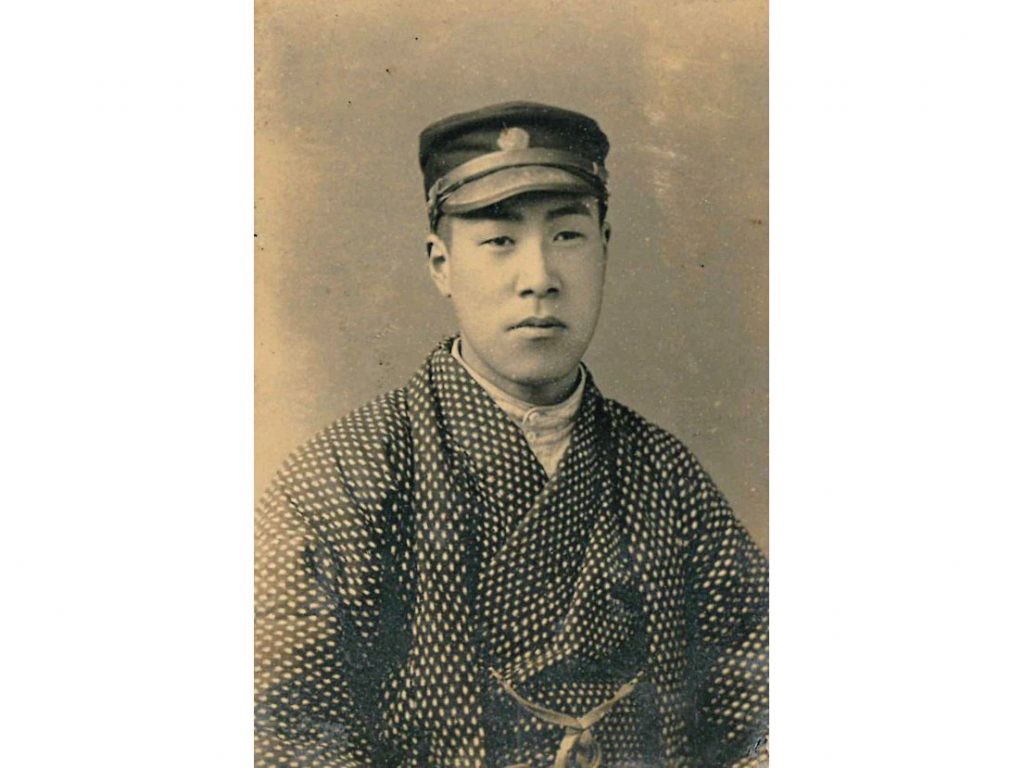
A passion for care with a rebellious mind
At the age of 18, a tragedy occurred in his family. It was 1919 and the worldwide Spanish flu pandemic killed his father and his sister Machiko. Deeply affected by this double death and the fact that no solution had been found for the flu, he decided to become a doctor. He enrolled at the former 7th High School Zoshikan Science in Kagoshima. In 1925, he entered the Faculty of Medicine at Kyoto Imperial University. He then transferred to the Philosophy Department of the Faculty of Arts and, after graduating from the same university, entered Kyoto Prefectural University of Medicine. This was his main course of study for the next few years.
During his studies, her mother-in-law suffered from cholelithiasis (stones in the gallbladder and bile duct). But after receiving treatment with Ikutaro Kato’s moxibustion (instant heat therapy), she was completely cured in about two weeks. Intrigued, the young Haruchiki decided to study acupuncture and moxibustion. In 1927 he joined the Dainippon Thermotherapy Institute of Ikutaro Kato to study with him. This passion will never leave him, especially thanks to the numerous results he obtained while he was still a student. The Kanpo medical approach became the second major influence on his work and he understood that the combination of these two medical traditions was by far the best way to achieve his goals.
He is a curious and brilliant mind, a jack of all trades. But above all he is a free spirit and non-conformist, which is not without its troubles in a Japan that is still very classical in spirit. Takehisa Kume, who wrote his biography much later in 1995, named his book “Toyo-Igaku no Kakumeiji”, in other words “A rebel of oriental medicine”. This is to say that he went on the rampage and refused the ready-made formulas of the two medicines. Noting that Western medicine does not work in certain cases, he decided to revisit popular and traditional medicines to find one or more effective methods, because that is his leitmotiv: practical effectiveness rather than intellectual theory. To do this, he will implement several things:
- From 1932 onwards, he gathered around him a group of doctors from the university in order to form a unit of researchers with the dual Western and Eastern approach. This group was to be called Kohō Igaku Kenkyūkai 皇法医学研究会 (Association for Research in Imperial Medicine). This is where the name Kohō comes from, which used to mean “ancient or classical” and whose kanji he changed to mean “imperial”.
- He further developed the principle of treatment with needles or hot objects that he learned from Ikutaro Kato, halfway between acupuncture and moxibustion, a technique that he wanted to be simple and accessible to all and not just to doctors.
- While he had not finished his studies, he published his first book on this subject, which was so successful that it had to be republished… 40 times in the first month. An incredible success!
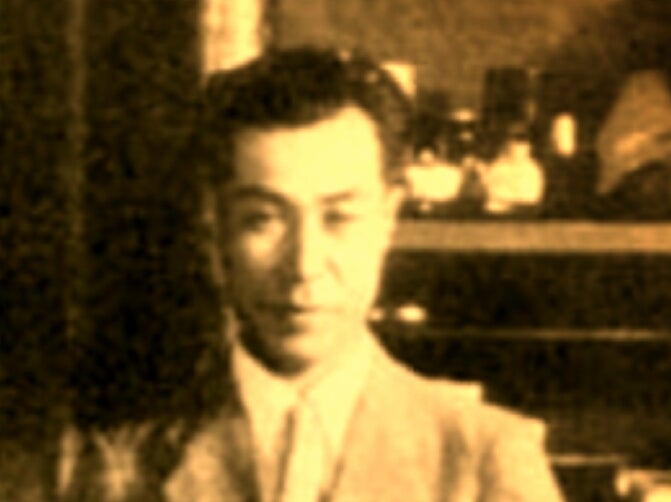
With the help of his group, Hirata will cover many fields, notably Anma, acupuncture, moxibustion, but also numerous researches including the possible application of the dermatomes[i] with a slightly different vision which will give the “12 zones of Hirata”. His wish is to have his approach recognised by the medical and governmental authorities.
But his popularity, his success and his research are not to everyone’s taste. The authorities at Kyoto University fired him even before he graduated and did everything possible to ensure that his medicine was not recognised by the Ministry of Health. No matter! He wrote many books to continue to develop his approach, notably by going into the field of psychology and its disorders through his method. But above all he decided to create his own medicine which he would name “Imperial Medical School” (皇法医学 Kōhō Igaku) and tried to popularise it via his works. And it works because if its official recognition has never been validated, on the other hand, many doctors have seized on his research to develop it further, even today, as you can see in the videos whose links are at the end of the article.
Given and received influences
His success attracted a certain Ryuhō Okuyama[ii]. Coming from the world of martial arts, he was one of the many students of the famous Sokaku Takeda who taught Daïto-ryū, as well as other great names of the Japanese martial world such as Morihei Ueshiba (founder of Aikido). At that time, he decided to study Anma under the guidance of the man who is now known as Dr. Hirata. Okuyama sensei was fascinated by the traditional Japanese medical science Kanpo (study of meridians, tsubos, etc.), but also – because it was the spirit of the time – by the modern sciences that could be combined with this ancient knowledge. In this he shares the same spirit as Dr. Hirata and therefore they will get along well. Okuyama trained with him for a long time.
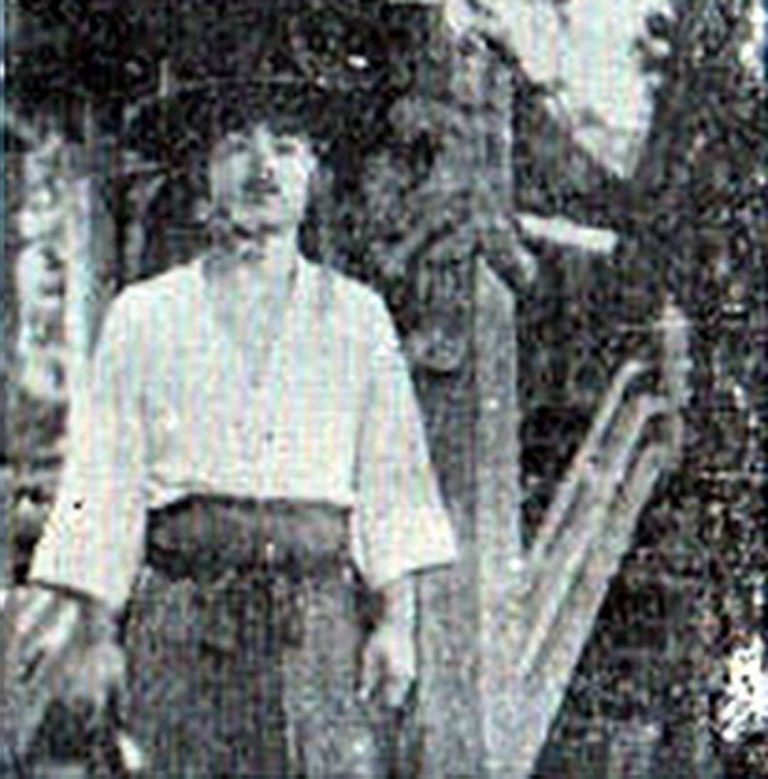
At the same time, and probably due to the influence of his student, Hirata became interested in the world of martial arts, especially a modern Jutsu created by Harumichi Hida which is called Hida-shiki kyōken-jutsu (肥田式強健術.). Very weak from birth, Harumichi Hida decided to become a strong man by using all possible techniques coming from the West (weightlifting in particular) as well as from the East, and from all historical periods. Martial arts form a large part of his training, but it is especially the work of Tanden, the use of weights to strengthen his body by following the lines of the acupuncture meridians that will be at the heart of his method.
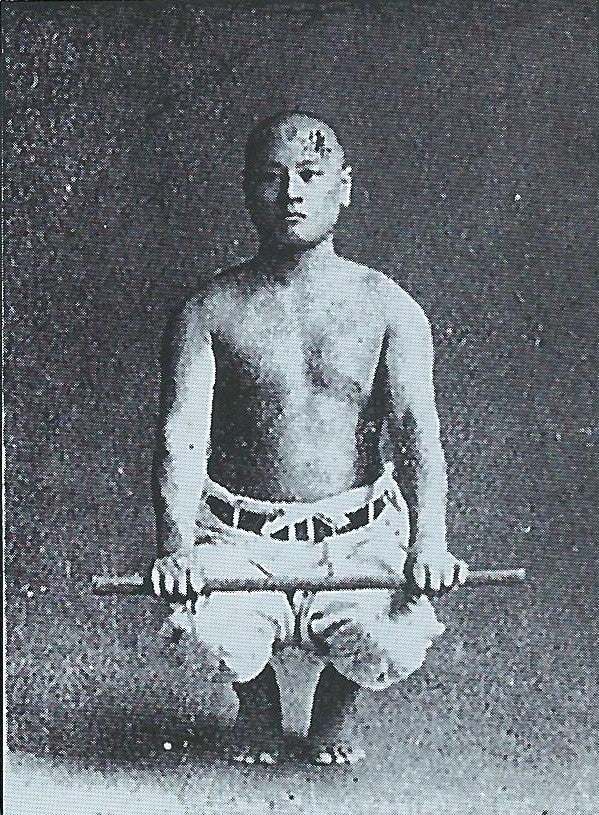
In only two years of training, he succeeded in remodelling his physique and thus obtained a certain celebrity. Harukichi Hirata decides to follow this man and learns his style of Kyōken jutsu. Discussing together, they decide to create a new training method based on the meridians which they will call Keiraku Shiki Chushin Soren Hō (経絡式中心操練法). They published a book about it in 1937. This method would also have a major influence on the understanding and use of the meridians within Hirata’s Anma, which was in the process of changing its name to Shiatsu, and consequently on the future Shiatsu as we know it.
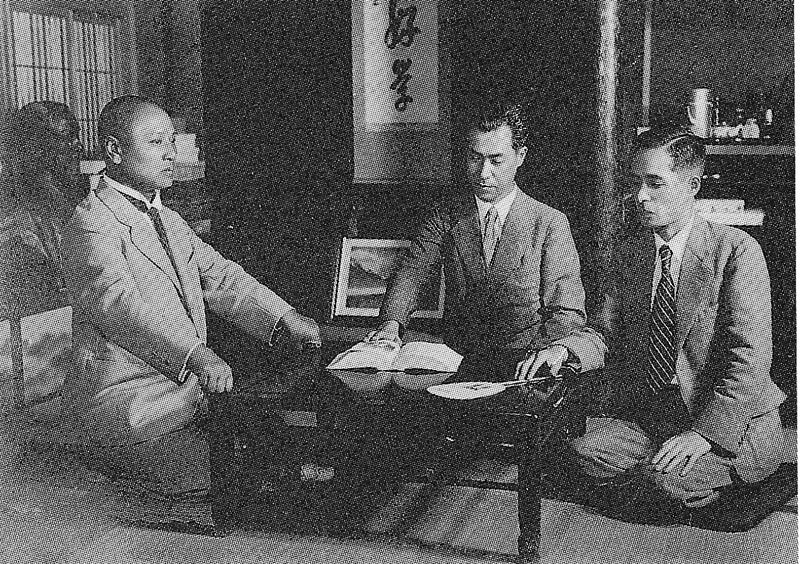
In the 30s, the methods he and his group had created were now numerous. He advocated Hirata-type psychotherapy through the application of heat (Shiki Shinri Ryōhō 平田式心理療法), as well as a unique form of heat therapy (Onnetsu Ryōhō), and that of the hot needle technique (Netsu Shinjutsu 熱針術). Later he also developed the head zones advocated by Dr Henry Head[iii]. This English doctor was also a genius researcher. A neurologist by training, he sought to establish the link between the nervous system and sensory reactions, including the skin, and eventually drew up a map of the body according to the different dermatomes. This work on the skin has a long history in Europe and will fascinate Dr Hirata. It is from this Western work that he will research, test, experiment and create the table of the 12 “Hirata reaction zones” (Hirata Shiki Juni Hannō Tai 平田式 十二反応帯 拡大図).
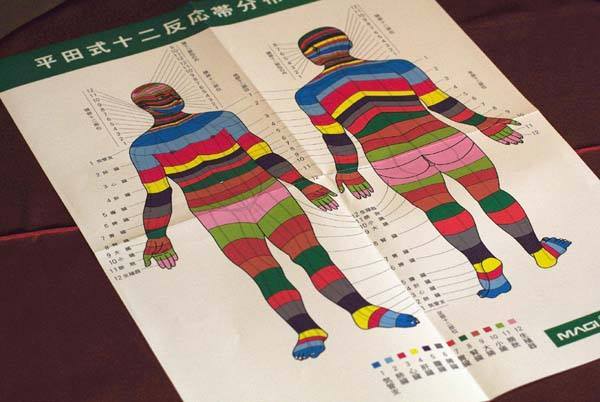
This consists, simply put and summarised, of 12 skin bands all linked to a nervous system. But according to the holographic principle of the body stated in Kanpo medicine (everything is in everything), he will systematize these 12 bands on 6 body zones in order to cover it entirely. This holographic vision of the body is notably reinforced by the French invention of auriculotherapy (reflex zone mapping of the ear) by Dr Nogier, whose work was taken up by the Chinese to make an acupuncture of the ear. All this work will have a great influence on many doctors, but also on a new technique in full development: Shiatsu.
Influences on the Kōhō Shiatsu School
As already mentioned, Ryuhō Okuyama was a student of Dr. Hirata. After a few years they parted ways because Okuyama was mainly interested in developing his own Shiatsu, whereas Hirata insisted on a more holistic and multi-approach approach. The reason for this difference is very simple to understand. Okuyama opened a clinic in Hokkaido in the 1920s, together with a certain Tokujiro Namikoshi. At that time this clinic offered a technique called Appaku-Hō as we can read on the pannel on the left of this picture.
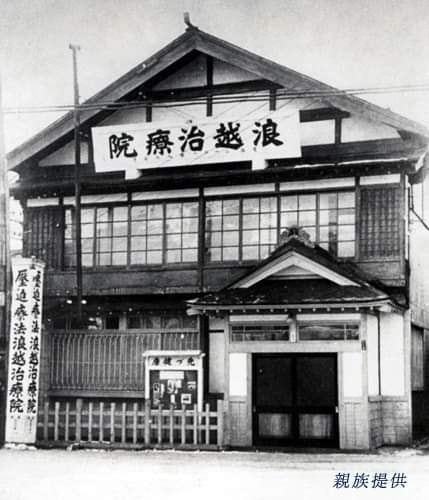
Through contact with Hirata, Okuyama’s Shiatsu took shape. He will integrate many aspects learned from him, including all the maps of the 12 reaction zones drawn during Hirata’s research. But he will also be influenced by the Kyōken jutsu of Harumichi Hida, which he discusses in his major work, the famous purple book[iv].
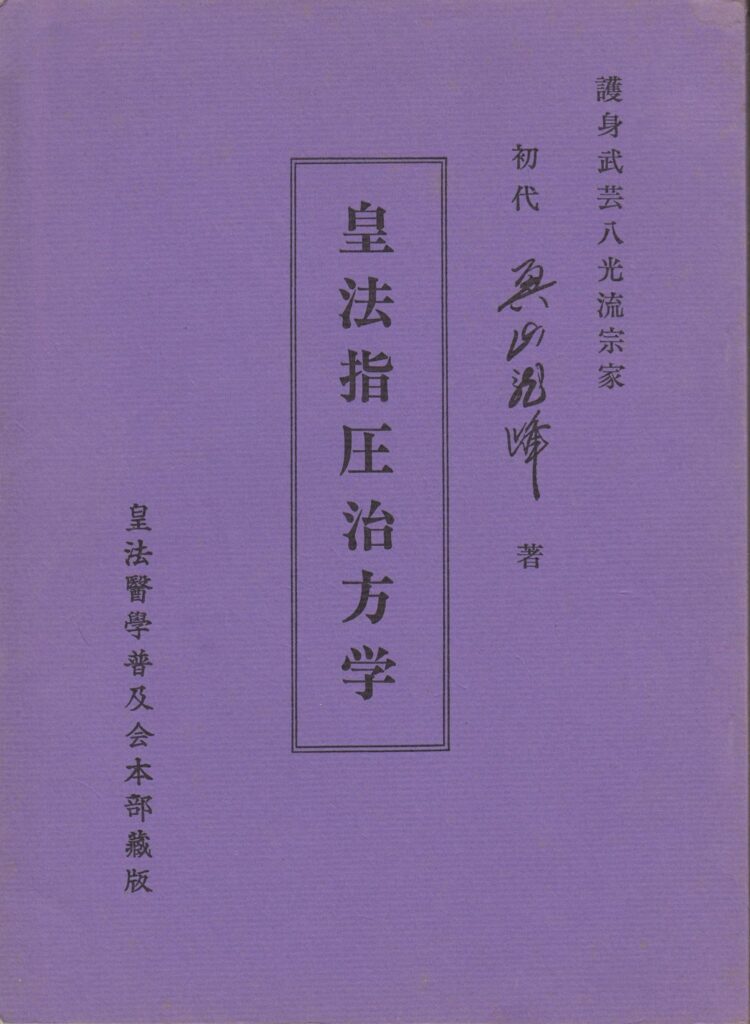
To understand the influence of Hirata’s medicine, one only has to go through the table of contents of Okuyama’s purple book :
第五章 Daigoshō (Chapter 5) : 皇法生理学 Kohō Seirigaku (Physiology of the Imperial Method)
- 新陳代謝作用Shinchintaisha Sayō (metabolism function)
- 血液循環作用Ketsueki Junkan Sayō (blood circulation function)
- 運動作用Undō Sayō (movement function)
- 精神作用Seishin Sayō (spirit function)
- 消化吸収作用Shōka Kyūshū Sayō (digestive and absorption function)
- 排泄作用Haisetsu Sayō (excretion function)
- 神経作用Shinkei Sayō (nerve function)
- 生殖作用Seishoku Sayō (reproductive function)
All these sections come from the Kohō Seirigaku (Imperial Physiology).
When in chapter 6 of the same book we can read:
- 第六章Dairokushō(Chapter 6)
- 生活的強健術 Seikatsu-teki Kyōkenjutsu (Art of Strengthening Life’s Target)
This is exactly what the Hida method is called. Nothing or almost nothing has been changed. It is not for nothing that Okuyama sensei will finally name his art after one of his masters: Kohō Igaku Shiatsu[v].
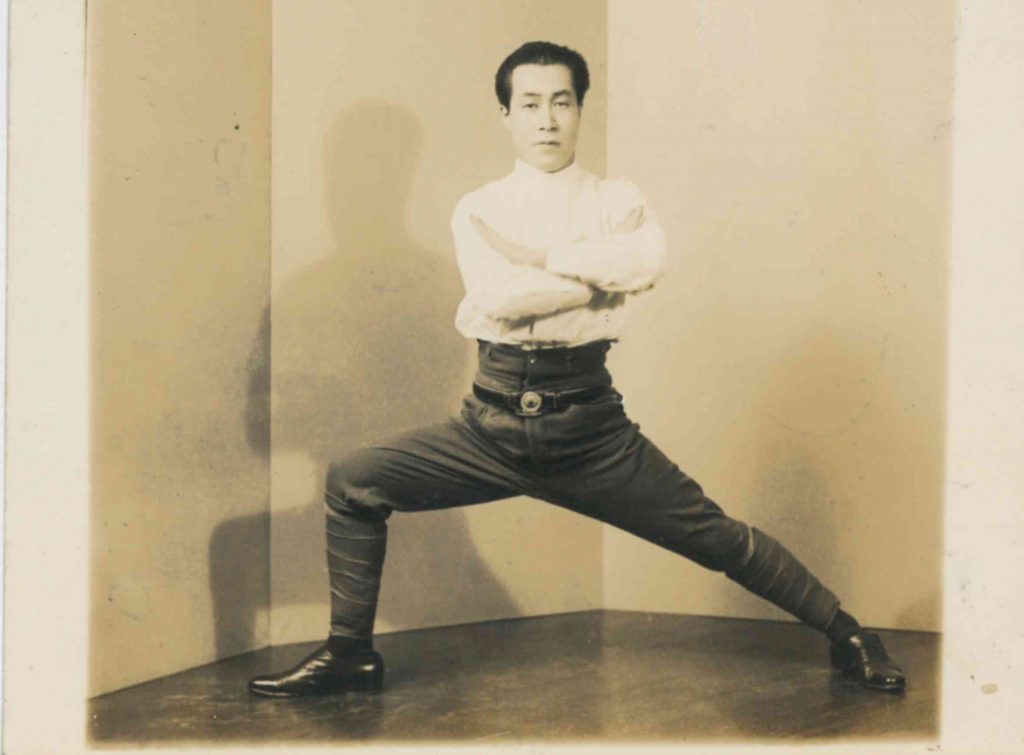
Influences on the Namikoshi School
In passing, it is interesting to note that this influence also rubbed off on Tokujiro Namikoshi, who probably benefited from the 10 years of collaboration with Ryuhō Okuyama. He too became familiar with Hirata’s methods. When he separated from Okuyama and moved to Tokyo, he disagreed with the latter. The Western influence was the most important for him and he wanted to orient his Shiatsu on the basis of anatomy. However, when his school (the Japan Shiatsu College) was opened in the 1940s in Tokyo, the teaching of the meridians and the theories of Kanpo medicine (by Professor Izawa[vi]) was allowed. Moreover, he also kept the map of the 12 zones of Hirata, which can still be seen today in the classrooms of the Namikoshi school, thanks to mannequins or wall maps.
Unlike his friend Okuyama (for they remained friends and Namikoshi wrote a letter at his funeral), he was able to have Namikoshi Shiatsu recognised by the state. The reason for his success lies in the historical roots we have just discussed. For the Ministry of Health, there was no question of supporting Okuyama Shiatsu, since it was a branch of Hirata’s medicine that had already been disavowed earlier. And it was this fact that led to the recognition of only one school of Shiatsu when there were at least two[vii].
A life cut short in mid-air
With the advent of the Second World War and Japan’s entry into the war against the United States of America, Dr Hirata was conscripted into the army in 1944. He died in 1945 during the Battle of Okinawa in the village of Osato, at the age of 44. There is no telling how far this genius might have gone if he had been able to continue his medical research in his remaining years. However, he left a large number of books (see below), a great influence on the Kanpo medicine of his time and on the pioneers of Shiatsu. His method of the 12 Hirata zones is still unknown in Western Shiatsu. However, it is one of the greatest therapeutic treasures we have inherited.
Hirata’s books
- Anga Hō 安臥法 (Quiet Rest Method) 1940
- Bi Hashi no En 美はしの苑 (Beauty Chopsticks of the Garden) 1940
- Guntai Taiiku no Kenkyū 軍隊体育の研究 (Military Physical Education Research 1943
- Shinryō Iten 心療医典 (Heart Treatment Medical Dictionary) 1932
- Hirata Shiki Ryōjutsu Iten, Hōhō Hen 平田式療術医典, 方法篇 (Hirata Formula Therapy Medical Dictionary, Method Articles) 1934
- Minkan Chiryōhō Zenshū. Dai 1kan (Seitai Shiatsu On’netsu Suichiryōhō Zenshū) 民間治療法全集. 第1巻 (整体指圧温熱・水治療法全集) The complete civil treatment regimen. Volume 1 (The complete collection of Shiatsu Thermal and Water Treatment Act) 1931
- Minkan Chiryōhō Zenshū Dai 2kan (Wakan’yō Ji Ryōyaku Eiyō Ryōhō Zenshū) 民間治療法全集. 第2巻 (和漢洋自療薬・営養療法全集) Complete treatment of private cure. Volume 2 (Japanese medicine herbal medicine – nutritional therapy complete collection)
- Hirata Shiki Kokoro Ryōhō 平田式心療法 (Hirata Cerebral Heart Therapy)
- Kōsen Ryōhō Seishin Ryōhō 光線療法・精神療法 (Light Therapy and Psychotherapy)
- Shokushu Chūshin Kenkō Hō 触手中心健康法 (Tentacle Centered Health Method)
- Kokumin Ijutsu Tenshin Hō 国民医術天真法 (National Medical Statement Law)
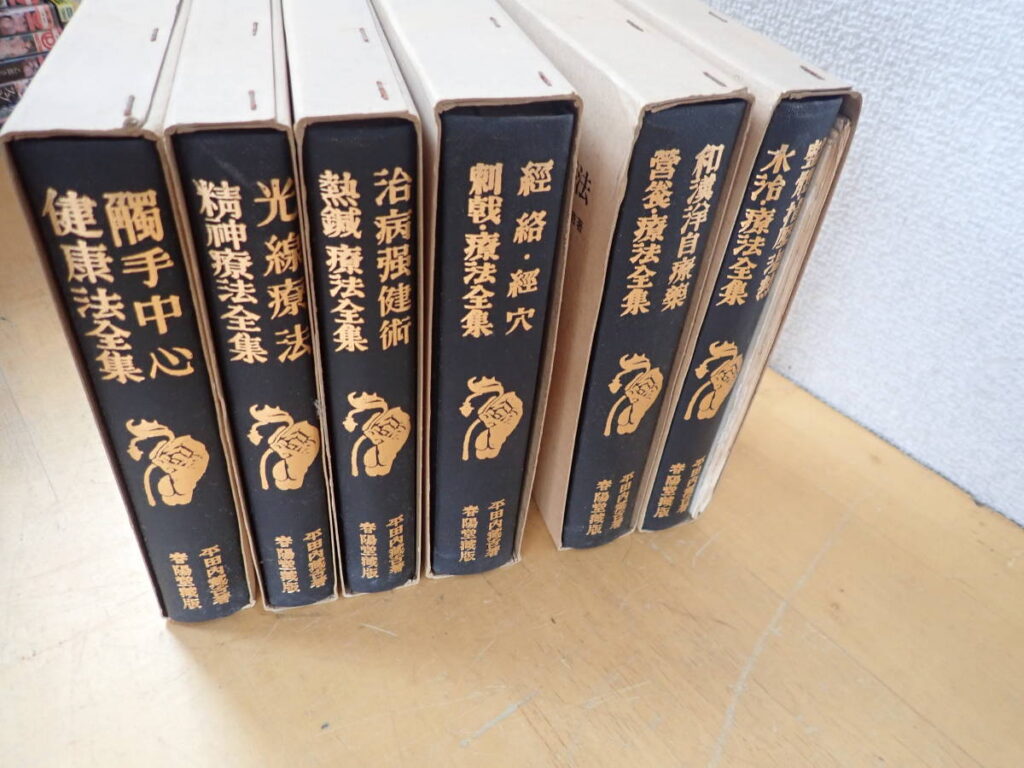
Notes
- [i] The dermatome in anatomy is an area of the skin innervated by a single posterior spinal root (sensitive root). The study of dermatomes goes back quite a long way in Western medical history, since the first person to take an interest in them in the 17th century was Jose Nunez Pernia Marquis de Nunez (1805 – 1879), homeopath to the Spanish court and in particular to Queen Isabella II.
- [ii] Ryuhō Okuyama (1901-1987) founded the Hakkō-ryū Jūjutsu school (八 光 流 柔 術) or Eighth Light school, in 1942. Here he integrated both his martial art and the teachings of Anma received from Dr. Hirata. He called this style “Kōhō Shiatsu”, where we find the essence of what was the Appaku-Ho technique of Anma, the content of the Tenpeki Tamai book, but without removing the traditional approach of the meridians and theories of Kanpo medicine.
- [iii] Henry Head (1861-1940) was an English physician who specialised in physiology, particularly of the heart and lungs. The first paper he ever published was on pain and areas of abnormal sensitivity and his observations were so precise that they became universally known as the ‘Head areas’. Head thought it likely that this sensation was related to innervation of the skin, but there was no precise knowledge of the skin distribution of afferent fibres that enter the spinal cord through each dorsal root and terminate in a segment of the spine. To address this lack of understanding, Head chose to study the anatomical distribution of skin disturbances caused by herpes zoster. Through careful study with A.W. Campbell, he was able to demonstrate the areas of skin affected by the disease and from this he was able to trace the distribution of different fibres in the skin from the cells of each ganglion to the corresponding segment of the spinal cord. He greatly advanced the research on the dermatome, work that was taken up by Hirata.
- [iv] The book Kohō Shiatsu Chihō Gaku (皇法指圧治方学) or “Purple Book” due to the colour of its cover, which could be translated verbatim as “study on imperial finger pressure therapy”. For more information on this, see this article on the Yotsume Dojo website.
- [v] Kohō Igaku Shiatsu was founded in 1942 together with the name Hakko-ryū jujutsu. This name is still the one that can be found on the official websites as in the French version here.
- [vi] For this you should listen to Chris McAlister’s interview with Yuichi Kawada Sensei, who confirms Izawa Sensei’s teaching of the meridians and theories of oriental medicine at the Japan Shiatsu College.
- [vii] The Iokai style of Shizuto Masunaga came much later.
References
- Hirata Zone Therapy with the ontake method; Oran Kivity, Sayoshi Books, 2021
- Yotsume dojo: http://www.yotsumedojo.com
- Wiki: Dr Hirata : https://ja.wikipedia.org/wiki/平田内蔵吉
- – For Japanese speakers, there is a whole series of videos about Hirata’s work, including this one with English subtitles
- : https://www.youtube.com/watch?v=JPZyapZmv_k
- – About Hakko-ryu
- : https://hakkoryu.com/
- – The 12 zones of Hirata: https://chushinryoho-kenkyujyo.com/平田式十二反応帯について
- – About Harumitsu Hida: https://www.academia.edu/9889832/Harumitsu_Hida
- – About Izawa sensei, see the interview with Kawada sensei: https://www.youtube.com/watch?v=rRZUJaWkSxs
Author
- Book review: “Another self” by Cindy Engel - 30 September 2024
- 24-26 October 2025: Master Class in Vienna (Austria) – Shiatsu and martial arts - 20 August 2024
- Lembrun Summer Intensive Course – July 6 to 12, 2025: Digestive System Disorders, Advanced Organ Anatomy, and Nutrition - 4 August 2024
- Anpuku Workshop with Ivan Bel in London – 7 & 8th, June 2025 - 22 June 2024
- Interview with Wilfried Rappenecker: a european vision for Shiatsu - 15 November 2023
- Interview : Manabu Watanabe, founder of Shyuyou Shiatsu - 30 October 2023
